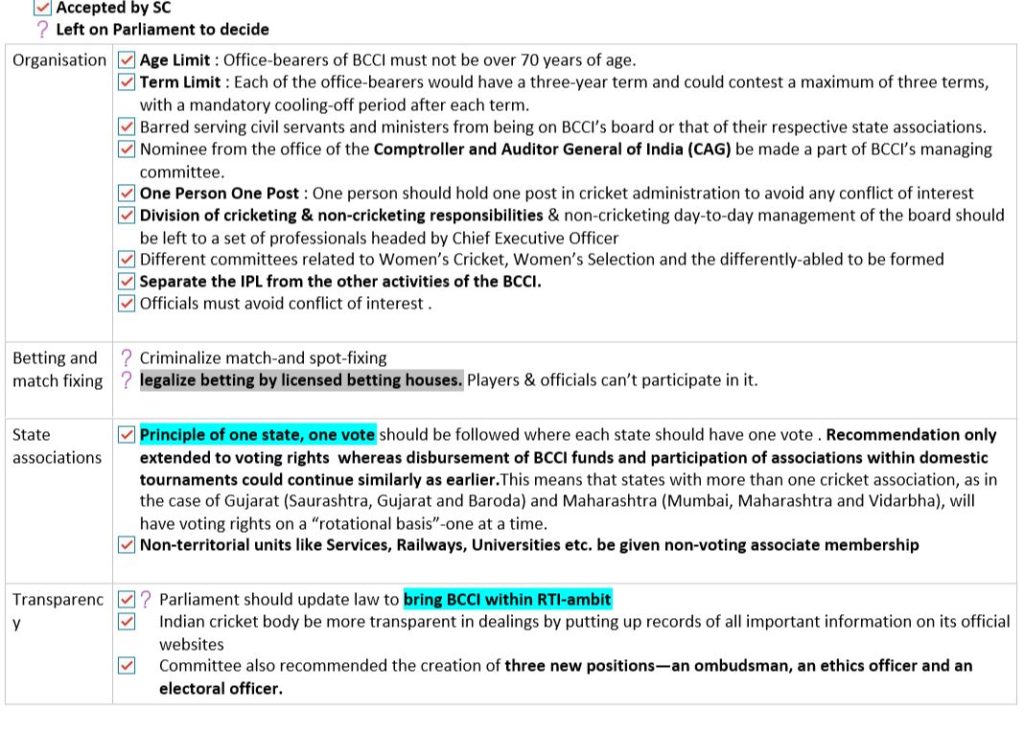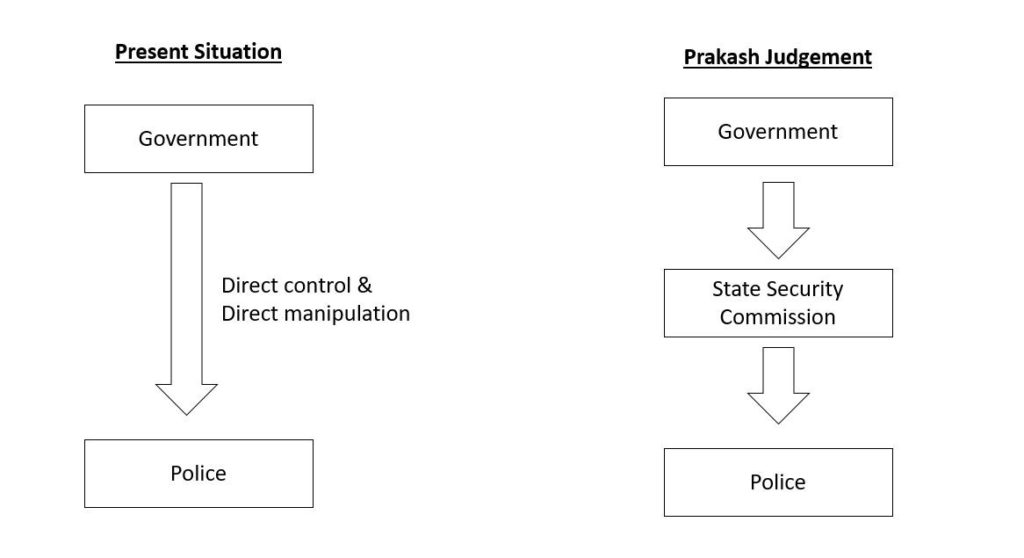Table of Contents
Pressure Groups

This article deals with ‘Pressure Groups.’ This is part of our series on ‘Governance’ which is important pillar of GS-2 syllabus . For more articles , you can click here
What are Pressure Groups?
- Pressure Groups are groups of people trying to pressurize the administrative-political system to protect and promote their interests.
- These groups operate outside formal governmental structures and focus on specific issues or causes.
How & why they were born in India?
Market Economy
- In the market economy, there is a struggle over tax/tariffs and a race to get concessions from the government. Different business groups emerged (e.g. FICCI, ASSOCHAM etc., in India) to pressurize the government to make policies that serve their interests.
Welfare State
- The government started to look after welfare functions, e.g. reservations in education & jobs.
- Different groups emerged to safeguard their interests.
Political Angle
- Politicians set their priorities according to the vote bank because they ultimately need votes to win elections. Hence, politicians will always favour landless labourers and workers because their number is more.
- In this case, Zamindars and Businessmen will try to protect their interests by forming a pressure group because, number-wise, they can’t win.
Activist Angle
Pressure groups are also formed to protect the rights of people. E.g.,
- Narmada Bachao Andolan: To rehabilitate the displaced and protect the environment
- Mazdoor Kisan Shakti Sangathan in Rajasthan pressurized government to form RTI
Political Party vs Pressure Group

| Political Party | Pressure Group |
| They are permanent | They are temporary |
| They have a long-term vision & aim. They are formed on ideological lines, common values and preferences | They have short-term & narrow vision. In some cases, they may focus on a single issue (for instance, opposing a planned road development). |
| They have cadre based organization | They don’t have any cadre |
| Eg : BJP, INC, BSP etc. | Eg : FICCI, ADR etc. |
Type of Pressure Groups
The different types of pressure groups found in India are business groups, trade unions, peasant groups, student groups, teachers’ associations, caste and religious associations, women’s associations, etc.
1. Business Groups
- Business Groups are the most important and organized pressure groups as they have enough resources to safeguard their interests.
- E.g., FICCI and the Associated Chambers of Commerce (ASSOCHAM).
- Business Pressure Groups exert pressure via funding parties.
2. Trade Unions
- Trade Unions are closely affiliated with political parties
- The main weapon of Trade Unions includes strikes and demonstrations.
3. Peasant Organizations
- Peasant Organizations were present even before independence. But after the abolition of Zamindari & Green Revolution, they became very important.
- Examples of Peasant Pressure Groups include All India Kisan Congress, Akhil Bharatiya Kisan Sangh etc. But these peasant groups have been organized on a territorial basis.
- Their demands relate to procurement prices, fertilizer subsidies, electricity charges, etc.
4. Student Organizations
- Student Organizations are mostly affiliated with political parties.
- Examples of Student Pressure Groups include
- National Students Union of India (NSUI) (affiliated with the Congress Party)
- Students Federation of India (SFI) (affiliated with the Communist Party of India)
- Akhil Bharatiya Vidyarthi Parishad (ABVP) (affiliated with BJP)
- They try to pressurize governmental policy on various crucial issues and their activities are not just confined to educational issues
5. Community Associations
- The Community Associations are organized on the basis of caste, class and religion.
- These include
- Caste Organizations: Scheduled Caste Federation, Backward Caste Federation, etc.
- Religion Organizations: Vishwa Hindu Parishad, Northern and Southern India Christian Conference, etc.
Interest Groups vs. Cause Groups
Interest Groups
- Interest Groups are pressure groups representing a particular interest of society: workers, employers, consumers or religious groups, etc.
- Their membership is limited to people of that interest.
- For example
- Trade Unions (like AITUC)
- Business Corporations (FICCI and ASSOCHAM)
- Professional Bodies
- Regional Groups (like Bajrang Dal)
- Caste Groups (like Karni Sena, Jat Mahasangh etc.)
Cause Groups
- Cause Groups are based on a certain cause
- Causes range from charity, poverty reduction, environment, human rights, transparency in governance etc.
- Membership is open to all. Members are motivated by altruistic concerns
- For example
- Mazdoor Kisan Shakti Sangathan: Working for transparency in governance
- PETA: Working for Animal Rights
- India against Corruption: Working to end corruption in India
Tools and Methods of Functioning of Pressure Groups
These methods and tools can be broadly divided into following groups

Meetings with Ministers and Civil Servants
- Ministers and Civil Servants are the centres of power.
- Pressure Groups (like FICCI or ASSOCHAM) aspire to get in touch with them to get some sort of concessions.
Lobbying
- Lobbying is the act of loitering in lobbies of legislative assembly and influence decisions of law-makers
- Pressure groups try to take their voice to the Parliament through MPs and MLAs as changes can be brought in details of the acts, and their issues can reach a larger audience through Parliamentary Questions.
Funding Political Parties
- All parties need funds to fight elections. Pressure Groups with financial strength can fund the political parties in the hope that they will safeguard their interest if they form their Government.
Direct Action
- Pressure groups may resort to direct action methods such as strikes, boycotts, sit-ins, and demonstrations to draw attention to their concerns and compel policymakers to address them. These actions aim to disrupt normal functioning to create pressure for change.
Coalition Building
- Pressure groups often form alliances and coalitions with like-minded organizations and individuals to amplify their collective strength and impact.
Expert Testimony and Consultations
- Pressure groups may provide expert testimony and participate in official consultations, committee hearings, and public forums to contribute their specialized knowledge and shape policy debates.
Media Engagement
- Pressure groups utilize media channels, including print, electronic, and digital media, to disseminate their messages, highlight their concerns, and reach a wider audience.
Research and Policy Analysis
- Pressure groups conduct in-depth research and policy analysis to gather evidence, data, and arguments supporting their positions. They may commission studies and publish reports.
Litigation and Legal Advocacy
- Pressure groups may resort to litigation and legal advocacy to pursue their goals. They file public interest litigations (PILs) in courts to seek judicial intervention and influence policy outcomes through legal means.
Role & Benefits of Pressure Groups
1. Representation to Unrepresented
- Pressure groups provide voice to groups and interests that are inadequately represented during elections.
- For example
- Women’s organizations such as Self Employed Women Association (SEWA), NCW etc., worked for the formulation of women-friendly laws like the Protection of Women from Domestic Violence Act of 2005.
- In the North-Eastern State of Manipur, Pressure groups such as ‘Just Peace‘ and Meira Paibis (women’s groups) are trying to influence the Government to listen to people’s genuine grievances.
2. Policy Formulation
- Pressure groups in India play a significant role in the policy formulation process.
- For example
- Business Groups like FICCI and ASSOCHAM are consulted by the government while forming Business Policy
- Kisan Unions like All India Kisan Congress are consulted by the government while forming agricultural policies
- Students Unions like ABVP, NSUI, AISF etc., are consulted by the government while forming education policies.
3. Persistent check on the government’s power
- Elections are held just once in 5 years. In such a situation, these Pressure groups keep a check on the government all the time.
- In cases where the government oversteps its boundaries or violates the law, pressure groups can take legal action, direct action, or mobilize public opinion.
4. Education
Pressure groups educate people through political debate and discussion. They gather and disseminate information about their cause or issue of concern. E.g.,
- Association for Democratic Reforms (ADR) releases reports to educate people on political issues and elections.
- Greenpeace is an environmental pressure group that educates people about environmental issues like pollution, deforestation, and climate change.
- Internet Freedom Foundation (IFF) is an organization that advocates for digital rights, internet freedom, and privacy in India and educates people about online surveillance, data privacy, and censorship issues.
5. Other Benefits
- Ensures pluralism in the representation of interests: In policy-making, you will find a group which demands a complete ban on tobacco to a group of tobacco manufacturers who is the pressurizing government not to implement such policies
Points against Pressure Groups
Create Political Inequality
- Instead of dispersing power widely, pressure groups tend to empower the already powerful. Pressure groups often have varying levels of resources, such as funding, expertise, and connections, which can give them greater access to decision-makers and policymakers.
Tyranny of the Minority
- Pressure groups aid in preventing the “tyranny of the majority.” However, pressure groups may create the opposite problem, i.e. Tyranny of the Minority.
- These groups sometimes ransack the whole state, e.g. Jat Agitation, in which property worth Billions was vandalized.
Decreases the Legitimacy of the Government
- When government work under pressure from Pressure groups, the common public loses trust in the government.
‘Behind the Scenes’ influence
- Due to this, the governance lacks transparency and accountability.
Comparison of Indian and Western Pressure Groups
- The pressure groups in the USA are regarded as the fourth organ of the government, while the Indian pressure groups are not yet able to play the same substantial role.
- In India and Great Britain, Pressure Groups target cabinet and civil service. However, the targets of American pressure groups are Congress and its committees.
- Indian pressure groups based on caste, religion, region, etc., are more powerful than modern groups like business organizations which are powerful in Western nations.
- In the USA, pressure groups are interested in foreign policy issues, while in India, pressure groups are concerned more with domestic policy issues and problems.


